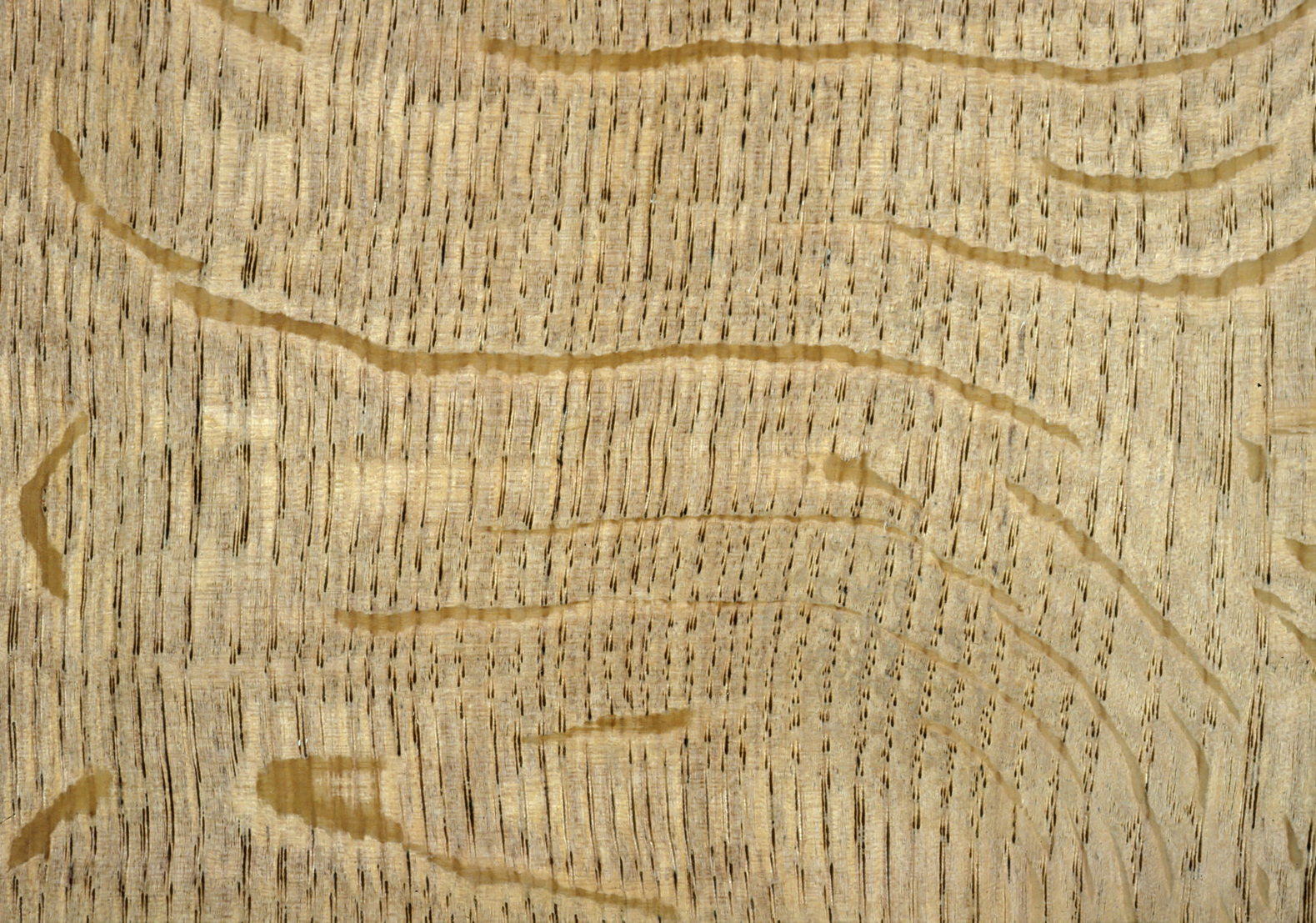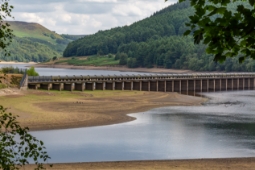Pedunculate oak (POK)
Pedunculate oak and its close relative sessile oak are the two native oaks in Britain. Both have iconic status in British culture and have had significant impact on our history particularly the building of the early navies. They are large trees with a substantial impact on the landscape and host to many thousand species of native flora and fauna.
Pedunculate oak is dominant in the south, east and central England with sessile prominent in the west of England, Wales, Scotland, and Ireland. The ranges overlap and there is a recognised hybrid between the two species: Quercus x rosacea. The hybrid is widely distributed in Britain and has characteristics of both parents which can cause issues in identification.
Pedunculate oak is a native tree and categorised as a principal tree species. These are tree species where silvicultural knowledge provides confidence to enable successful deployment across Britain. The species are either already widely used or are increasing in usage. They will continue to be important unless affected by a new pest or disease or become adversely affected by climate change.





Range
Native to the British Isles except the far north, and to much of Europe. Has been planted in parts of western Britain where sessile oak might be better suited.
Provenance Choice
Material from selected British or north-west European seed stands are to be preferred.
Key Properties
Site Requirements
Considered to be more light demanding than sessile oak. Wind-firm and cold hardy, but is susceptible to damage by late spring frost at young age. Can tolerate some exposure, but form is likely to be poor; for timber production grow on sheltered sites.
Suited to soils in the medium to rich nutrient status; prefers heavy and moist soils (pH range between 4.5 and 7) and can tolerate some waterlogging provided such soils do not dry out in summer. Its ability to root into heavier soils is ecologically valuable for its structure-improving and drainage effects. Avoid very free-draining soils with a fluctuating water table as this can lead to ring shake.
Further detail on the site requirements of pedunculate oak in current and future climates can be examined using the Forest Research Ecological Site Classification Decision Support System (ESC).
ECOLOGICAL SITE CLASSIFICATION TOOL
Silviculture
Pedunculate oak is a light-demanding species, with a deep rooting system which makes it very wind-firm. It lacks apical dominance and will tend towards a bushy appearance if open grown. It is a species that coppices well.
When planting protection from herbivores is essential. This can be in the form of fencing, but oaks will respond well to growing in tubes. On heavy soils ground preparation may be required. Plants should be sturdy with a good root/shoot ratio and can be established satisfactorily with bare root or containerised plants. Good weeding and follow-up care are essential. Plants that develop poor form can be revitalised by stumping back with subsequent singling.
The poor apical dominance of pedunculate oak suggest higher densities at planting than would normally be financially acceptable (6000 + stems per hectare). To reduce costs, oak can be grown successfully with a nurse species to encourage straight growth. This can be achieved by group / nest planting or by planting in rows. Mixed broadleaves dominated by shade tolerant species can be planted as a matrix around groups. Suitable species for mixtures if planting in rows is western red-cedar (Thuja plicata), Norway spruce (Picea abies), Larch spp. (Larix spp.) or Scots pine (Pinus sylvestris)
To produce a quality saw log early formative pruning is essential to ensure single leaders and to remove larger side branches. This should start soon after establishment and continue until a single straight stem is achieved. Subsequent management if growing in mixture may require follow-up pruning to maintain stem quality to a minimum of 6 m height on the stem. Aim to manage 300 to 400 trees/ha as potential final crop.
Thinning should be frequent and light with the aim of keeping healthy balanced crowns, but keeping enough shade to reduce epicormic growth. Thinning should continue with the aim of leaving c 100 trees/ha as the final crop. Yield class ranges for oak are from 2 to 8 with an average around 4, but this is dependent on-site conditions. Rotations can be from 130 to 160 years with oak grown under specific management conditions producing sawlogs as early as 100 years.
Pests and Pathogens
Pedunculate oak along with sessile oak are relatively free of pests and diseases.
Oak mildew caused by the fungus (Erysiphe alphitoides) can result in young leaves and shoots being covered in white ‘powder’ in warm humid conditions. Leaves will turn black and shrivel, but is not thought to have any long-lasting effect.
Gypsy moth (Lymantria dispar), oak leaf roller moth Tortrix (Tortrix viridana) and winter moth (Operophtera brumata) can occasionally cause alarming defoliation on oaks, but this generally does not result in any long term tree health issues.
Oak processionary moth (Thaumetopoea processionea) is another defoliator accidently introduced to England in 2015 and is considered primarily a threat to human health rather than a tree health issue. This is a notifiable pest, and any reports should be raised via TreeAlert.
Acute oak decline is an emerging disease of oak trees and being intensively researched. It is usually associated with mature oaks and is mainly seed as weeping patches or stem bleeds and often associated with the D shaped exit holes of the two-spotted oak buprestid beetle (Agrilus biguttatus). This is a reportable disease, and any sightings can be raised through TreeAlert.
Acorns of pedunculate oak are often affected by knopper gall (Andricus quercuscalicis), leading to acorn deformation and abortion which can be a major issue if regeneration is required. Oaks can also suffer occasional sometimes acute damage by the grey squirrel.
See our other tools and resources
Further Resources
Internal
In addition to the general sources of information for species the following are useful for pedunculate oak.
Broome, A., et al. (2021) Ecological implications of oak decline in Great Britain. Research Note. Forest Research Publications.
Forestry Commission (2003) The Management of Semi-natural Woodlands: 5. Upland Oak woods. Forestry Commission, Edinburgh.
Hubert, J. (2005) Selecting the right provenance of oak for planting in Britain. Forestry Commission Information Note 77. Forestry Commission, Edinburgh.
Worrel, R and Nixon, C.J. (1991) Factors Affecting the Natural Regeneration of Oak in Upland Britain: a literature review. Forestry Commission Occasional Paper 31. Forestry Commission, Edinburgh.
External
In addition to the general sources of information for species the following are useful for pedunculate oak.
Eaton, E., Caudullo, G., Oliveira, S., de Rigo, D., 2016. Quercus robur and Quercus petraea in Europe: distribution, habitat, usage and threats. In: San-Miguel-Ayanz, J., de Rigo, D., Caudullo, G., Houston Durrant, T., Mauri, A. (Eds.), European Atlas of Forest Tree Species. Publ. Off. EU, Luxembourg, pp. e01c6df+
Kerr, G. and Forster, J. (2018) Can we grow oak to 60 cm DBH in less than 100 years in Britain? Quarterly Journal of Forestry. 112 (3): pp 156-162.
Leslie, A. (2024). Best practice prescriptions for propagating and establishing pedunculate oak (Quercus robur) for timber production. Monograph. Future Trees Trust, Coleshill, SN7 6PT. www.futuretrees.org.




